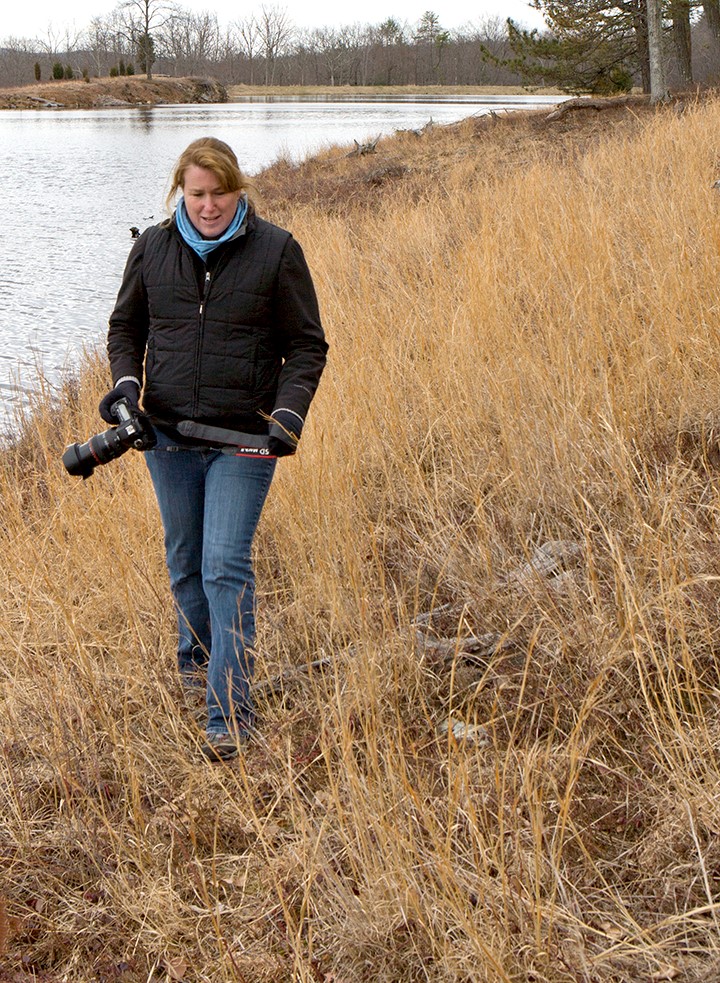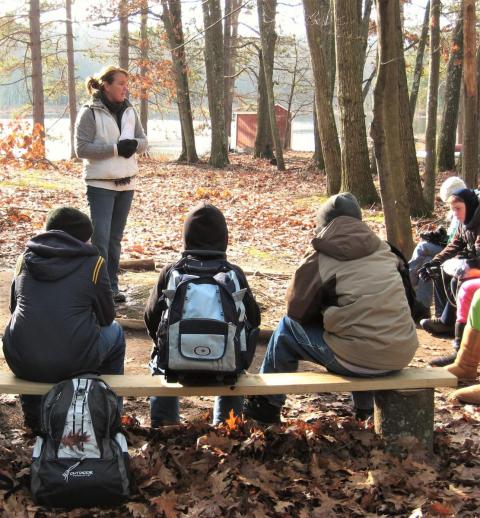
When George showed us the lesson plan and accompanying book based upon Nancy’s collaboration with artist Jill Pelto, our jaws dropped!
Sure, Nancy has numerous degrees, (Doctorate of Education; Teacher Leadership; Master of Education; Bachelor of Science), certifications, (K-12 Educational Supervision) teaching experience, awards and grants—but, it’s her love of education, nature and art that make her a true renaissance woman, in our estimation.
“I really feel that my childhood provided me with what is probably the most formative experiences in terms of my love for the environment and sharing it with others. I was lucky enough to grow up on the shores of the largest lake in New Jersey, Lake Hopatcong. As a family we were always outside: sailing, swimming, fishing and skating. Because of the adults around me who were willing to share their knowledge, I could read the wind and sky, I could identify fish and trees and birds and I was constantly surrounded by the natural environment,” shared Nancy.
If ever there was a great way to visually engage students in teaching the BIG PICTURE of climate change with supporting data- it’s Nancy’s lesson plan. We were so taken with it, we made it our Featured Lesson Plan. What we didn’t know when George first told us about Nancy is what an incredibly talented and multidimensional person she is.
The Classroom Outside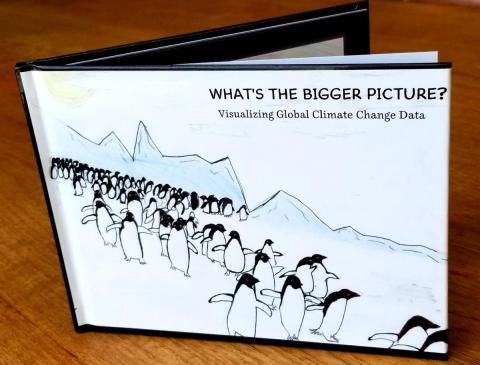
“Before they called it 3D optimal learning experiences, we called it ‘Playing Outside’,” laughed Nancy.
It was hands-on experiences that were so important to Nancy and where she realized that learning didn’t have to occur within the four walls of a classroom. It became quickly apparent to her that the students were craving outside play and shared learning experiences that inspired her to become a science teacher. “I have kept my personal promise and provide my students with as many experiential learning opportunities as possible, everything from marine biology trips to the Chesapeake Bay, whale watches in Cape Cod, human ecology trips to Walden Woods and of course using our own campus on a regular basis for nature studies,” Nancy proudly states.
Where and Art, Science & Education Meet
As a student in high school and college Nancy was focused on a career in science where electives were limited. As an adult, Nancy signed up for a pottery class and found that everything she created was inspired by her love of the environment- tide pool bowls, vases with fern imprints, birdhouses…the list went on. “Although I wasn’t going to win any awards with my pottery it stirred in me the need to combine art with science. Soon afterward I took a photography class. That is where I met my husband, he was teaching the class. He is an evolutionary biologist and a fine art photographer and he too understands the importance of using art to convey science. We now teach a Conservation Photography class together in Maine at the College of the Atlantic each summer,” said Nancy.
Communicating with Climate Skeptics
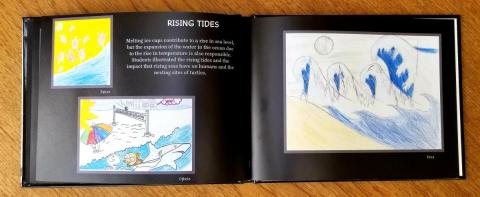
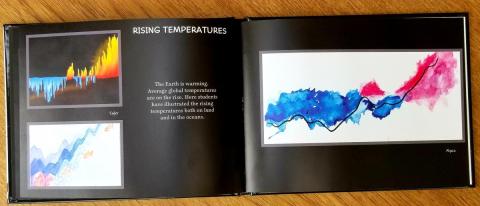
Seeing Jill Pelto’s art became the inspiration for Nancy’s; “What’s the Bigger Picture” which features student renditions (see below), based upon climate crisis data.
“One of the activities I do with my students in our Climate Change Biology class is called, ‘Talking to a Climate Skeptic’ where we discuss ways to open the door to discuss the science behind climate change and what it means in terms of our planet’s future. I found that art is an exceptional, non-threatening way to open this door. If students can create a piece of artwork that makes people want to talk about it, then they have an avenue for discussing the science that is the foundation of the piece,” shares Nancy.
Teach Teachers about Climate Science
One of Nancy’s biggest concerns for science education is the lack of understanding and formal training by science teachers in the area of climate science.
“Although most science teachers know how climate relates to their specific discipline, few, if any teachers teach this due to lack of classroom tools,” said Nancy. “This is where Shape of Life helps. Resources on the website provide foundational knowledge and understanding that make teaching climate science possible. The resources provide pertinent links to NGSS and engagement; everything a teacher hopes for when looking for content to include in their classroom,” adds Nancy. (Aw shucks, Nancy- it’s teachers like you who keep us psyched about what we offer).
Nancy sees each day as a challenge where she is charged with the job of creating lessons that help students learn and discover their passions, inspiration and connections to the natural world. “Empowering students to find their voice, be active learners and become leaders in the field is what drives me. I want students to leave my program knowing how valued they are and how to apply their talent to create a better world,” said Nancy.
Thank you for inspiring future renaissance people, Nancy.